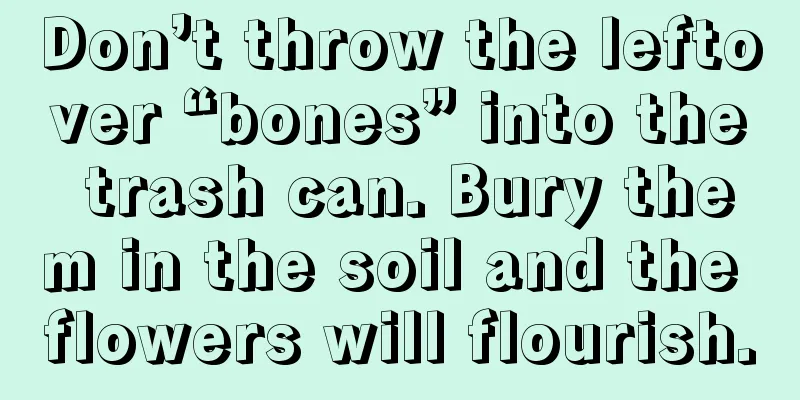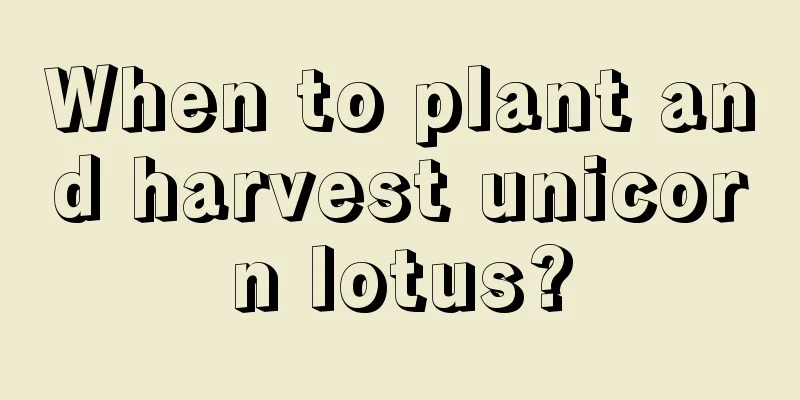Don’t throw the leftover “bones” into the trash can. Bury them in the soil and the flowers will flourish.

|
You may not understand other things I say, but I’m sure you all know the concept of “starting line”! That's right, the soil surrounds the roots of the plants, and the roots are the most important part of the plants. Only when the roots grow healthy and strong can the whole plant grow green and bloom abundantly. So soil is really important. Now that it is autumn, many friends want to change the pots for their plants and trim the roots of their plants. Huahua would like to give everyone a small suggestion. When changing pots, you might as well add some "materials" to the soil so that the plants can grow better! So what kind of materials should be added to the soil to make it better? Let me give you a few examples below! Bone residueSome people say that this flower plant is not a puppy, so why is it interested in bone residue? This is because bone residue is rich in phosphorus and calcium, which are very beneficial to plant growth! Before we make bone residue from bones and mix it with the soil, we first expose the remaining bones to the sun for two days to let the sun kill the poison for us. Then we crush the bones and mix them into fertile soil. In this way, a nutritious soil is ready! It’s time to pot the plants! Rotten branches and leavesIn fact, these rotten branches and leaves are also good materials for providing nutrients to plants! Moreover, these rotten branches and leaves are very easy to find. Where there are trees, there will be fallen leaves. If you see them, just pick up some! Rotten leaves contain many trace substances needed by plants. These substances and trace elements can provide a good growth environment for plants and are very suitable for plant growth. cinderFew people know that coal slag can also be used as soil for plants. Yes, although coal slag is rough, when mixed with garden soil, it will make the soil loose and breathable. There is a very big advantage of mixing coal slag and garden soil together as potting soil for plants, which is that it can greatly improve the soil compaction condition! Prevent the soil from becoming compacted and suffocating the roots of the plants! The above three kinds of "materials" are very suitable for adding to the soil for flowers, you can try it! Finally, Huahua would like to remind everyone that every time you change the pot, don’t just change the soil of the plant, but also add some “materials” in it, so that the plant can grow stronger! I don’t know if today’s article has helped you. If you have learned this operation, find a warm afternoon to change the plant’s pot! |
Recommend
Are lilies shade-loving or sun-loving plants?
Do lilies prefer shade or sun? Lily is a plant of...
Kudzu flower pictures
Morphological characteristics of kudzu flowers It...
Is it profitable to grow apples? How much profit can you make from growing apples?
Is growing apples profitable? Apple is a very com...
How long does it take for Gloxinia cuttings to take root and when is the best time to do it?
Rooting time of Gloxinia cuttings When taking cut...
Does Aspidistra bloom?
1. Time It will bloom, and if it is not affected ...
When is the best time to prune the jujube tree?
Time to prune jujube trees The jujube tree can be...
White orchid seasons maintenance management
Four Seasons Management spring Suitable for balco...
Angelica dahurica planting technology and cultivation management methods
Angelica dahurica is an important medicinal plant...
How to remedy overwatering of green radish? What kind of water will make it grow best?
1. How to remedy overwatering of green radish If ...
Can I grow banana trees at home?
Can I grow banana trees at home? You can plant ba...
How often should I water the juice balcony?
How often should I water the juice balcony? Sprin...
What is the best season to plant corn?
When planting corn, you should choose high-qualit...
Cultivation methods and precautions of pomegranate flowers
Farming methods plant Pomegranates can be planted...
How to make rootless cones grow roots (3 common rooting techniques for cones)
Rooting tips for succulent plants Common fleshy c...
Can you grow succulents with garden soil and granules?
Can you grow succulents with garden soil and gran...









